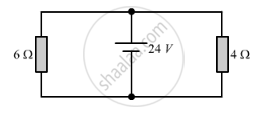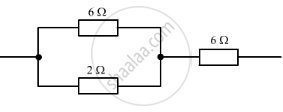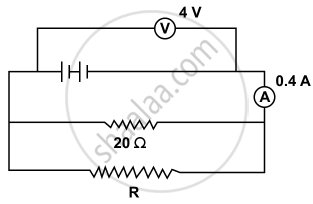Advertisements
Advertisements
Question
Two V-I graphs A and B for series and parallel combinations of two resistors are as shown. Giving reason state which graph shows (a) series, (b) parallel combination of the resistors.

Solution
We know that V = IR or `1/"R"=1/"V"=` slope of graph given.
The resistance increases as the slope decreases. Graph B clearly has a greater slope than graph A. As a result, B has less resistance than A. As far as we are aware, combined series resistance is consistently greater than combined parallel resistance. As a result, A and B are series and parallel combinations, respectively.
APPEARS IN
RELATED QUESTIONS
Differentiate between resistances in series and parallel.
Complete the following :-
(c)

Which of the following arrangement, A or B, has the lower combined resistance?

Find the current in each resistor in the circuit shown below:

The figure given below shows three resistors?

Their combined resistance is:
(a) `1 5/7`Ω
(b) `14` Ω
(c) `6 2/3` Ω
(d) `7 1/2` Ω
A combination consists of three resistors in series. Four similar sets are connected in parallel. If the resistance of each resistor is 2 ohm, find the resistance of the combination.
In the following figure calculate:
- the total resistance of the circuit
- the value of R, and
- the current flowing in R.

Show how would you connect three resistors, each of resistance 6 O so that
the combination has a resistance of(a) 9 Ω (b) 4 .Ω
An electrical appliance having a resistance of 200 Ω is operated at 200 V. Calculate the energy consumed by the appliance in 5 minutes in kWh.
A piece of wire of resistance R is cut into three equal parts. These parts are then connected in parallel. If the equivalent resistance of this parallel combination is R1, what is the value of the ratio R1 : R?
